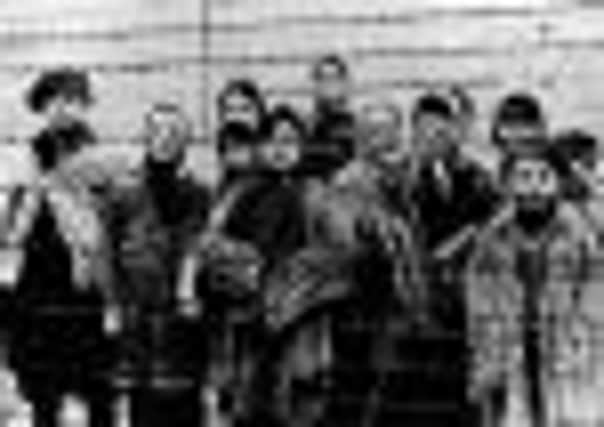Steven Hay: We must never forget the horror of the holocaust


When I was given the opportunity to visit the former Nazi extermination camp at Auschwitz-Birkenau, I was unsure whether to go. The stories I had heard about it were shocking yet in the end, curiosity got the better of me. I couldn’t refuse.
Before the trip, at an orientation seminar, I met a Holocaust survivor who shared stories of the horrors of Auschwitz. His name was Zigi Shipper and he spoke of his experiences in the ghettos as a ten-year-old, when he was sent to the labour camps at the age of 14, and the joy of liberation by the Allied forces.
Advertisement
Hide AdAdvertisement
Hide AdHis stories were very emotional – something no text book can provide.
He told how the Nazis de-humanised the Jews by stripping them of their possessions, replacing their names with numbers, and completely disregarding them as human beings. He said he never gave up hope and the thing that kept him going was his sense of humour.
Weeks later, as we neared Auschwitz I, the first of the three camps in the complex, I began to feel nervous.
It was bigger than I could have imagined. It sits on the outskirts of Krakow and I learned it was previously a Polish barracks, which makes sense as it saved the Nazis from building it themselves.
Advertisement
Hide AdAdvertisement
Hide AdI noticed how quiet it was, the only sound was that of the wind and our footsteps, which really disturbed me. The huge watchtowers and fences brought Zigi’s stories to life as I imagined him in the camp – helpless.
In the Auschwitz museum I felt uneasy when I was shown mountains of personal possessions belonging to the prisoners, including their shoes, kept behind display cases. It hit me hard, especially as the majority were baby shoes.
But it wasn’t until I got to the human hair where I completely lost control – huge heaps of it piled up behind the glass. I was unable to explore the room fully as my emotions were all over the place. I felt angry, sad and confused at the same time.
It made me sick as I was unable to comprehend that millions were killed without a second thought. These were objects I could relate to – shoes, children’s toys, toothbrushes, hairbrushes. Talking about it is one thing, but it isn’t until you see it for yourself that you understand how horrific it truly was.
Advertisement
Hide AdAdvertisement
Hide AdWe were shown a gas chamber next and it was appalling. It’s difficult to believe hundreds were crammed into it at once, all in excruciating pain.
After this we made our way towards Auschwitz II-Birkenau, the largest of the camps in the complex. It was even bigger than the first one, its iconic tower and train tracks greeting us.
It took around half an hour to walk from one side of the camp to the other, on each side huge fences – which at the time would have been electrified – and guard towers.
Behind the fences were barnyard-like shacks, where the prisoners lived. The living conditions, if you can call them that, were cramped as animals would share the space too.
Advertisement
Hide AdAdvertisement
Hide AdThe train tracks seemed to go on forever as we made our way to the “sauna”, where the prisoners’ clothes were disinfected using steam to prevent the spread of disease. Inside was a memorial with pictures taken from the prisoners’ luggage when they first arrived.
People with their families all smiling back – all murdered by the Nazis.
At the end of the day, a prayer was sung in the camp by a Jewish rabbi, which was amazing – showing how no-one will be forgotten and that good always prevails.
Auschwitz hit me pretty hard. I didn’t think I’d feel this way and it was an experience I will never have again – or ever want to. The ordeal made the Jews stronger as they never gave up hope, thanks to people like Zigi Shipper. I went to Auschwitz and learned a lot from it, and I’m glad I did.